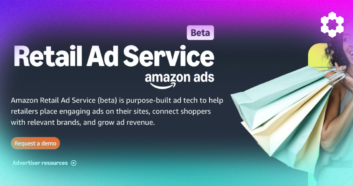Amazon’s Vendor Central shake-up in late 2024 was a clear indicator of the company’s long-term strategy shift toward a marketplace-first model. The forced transition of many first-party (1P) vendors to Seller Central, combined with Amazon’s growing focus on advertising and third-party (3P) selling, has reshaped how brands operate on the platform.
So, what does 2025 hold for Amazon’s vendor ecosystem? Will Vendor Central continue to shrink, evolve into something new, or become obsolete altogether? More importantly, how can brands seize new opportunities in the changing landscape of Amazon Vendor Central 2025?
2024 Amazon Vendor Central Changes: A Quick Recap
In 2024, Amazon announced that many Vendor Central accounts would be terminated for sellers generating under $5–$10 million annually. This move forced affected vendors to implement a Seller Central transition, where they now:
- Manage their own pricing, inventory, and customer service
- Pay referral and fulfillment fees under the FBA model
- Compete directly with third-party sellers (3P)
The shift reflected Amazon’s desire to streamline operations, prioritize profitability, and invest more heavily in advertising-driven revenue.
But now that 2024’s major changes are in motion, what’s next for 2025?
Predictions for Amazon Vendor Central in 2025
1. Vendor Central Will Continue Shrinking
The trend of Vendor Central contraction is unlikely to reverse in 2025. The forced offboarding of smaller vendors in 2024 was just the beginning.
Who Will Remain on Vendor Central?
- Enterprise brands with $20M+ in annual sales.
- Categories where Amazon maintains strong direct supply chain relationships (e.g., grocery, CPG).
- Vendors willing to comply with Amazon’s strict cost and supply chain demands.
Who Will Be Pushed Out?
- Brands that struggle with Amazon’s price control tactics.
- Sellers with lower sales volume or poor profitability.
- Vendors who fail to provide differentiated, exclusive products.
By late 2025, Amazon Vendor Central could either:
- Shrink to support only the top-tier enterprise brands, or
- Be merged with Seller Central into a single Supplier Central model, where Amazon controls wholesale contracts in a more limited capacity.
2. A Hybrid Model May Emerge
With Vendor Central shrinking, a hybrid approach—where brands use both 1P and 3P selling strategically—will become more common.
Some vendors already split their catalog, putting some products under the Amazon wholesale model while using Seller Central for higher-margin or exclusive SKUs. Expect more brands to:
- Use Vendor Central for high-volume SKUs where Amazon prefers direct supply.
- Reserve premium, high-margin, or seasonal products for Seller Central.
- Test new product launches in 3P first before offering them to Amazon wholesale.
This hybrid model will help brands mitigate risk and maximize profitability, balancing wholesale partnerships with direct-to-consumer (DTC) flexibility.
3. Amazon Will Prioritize Private Label and Exclusive Partnerships
Amazon has steadily expanded its private label business, and this will likely accelerate in 2025.
- Expect Amazon to favor vendors who offer exclusive products rather than simply supplying name-brand inventory.
- Brands that co-brand or create exclusive variations for Amazon may secure longer-term wholesale agreements.
- Generic or widely available products will face stronger competition from Amazon’s own brands.
To remain competitive, vendors must focus on differentiation—unique packaging, exclusive bundles, or private-label partnerships will be key to survival.
4. Increased Automation and AI in Vendor and Seller Central
Automation will play an even bigger role in 2025’s marketplace operations. Expect Amazon to:
- Automate purchase order management for remaining 1P vendors.
- Expand AI-driven pricing enforcement, making Vendor Central even more rigid on margin control.
- Roll out Seller Central AI features to optimize ads, inventory forecasting, and fulfillment.
For sellers, this means less room for negotiation and more data-driven decision-making.
Stop losing money to Amazon vendor chargebacks with ChargeGuard. Our automated deduction management solution identifies and disputes fees with a 99% success rate, putting money back in your pocket without the hassle. Start your free recovery audit now.
5. The Role of Advertising Will Continue Growing
Amazon’s revenue is shifting toward advertising and marketplace fees. In 2025, brands will have to rely more on paid visibility rather than organic discoverability.
Key trends include:
- Rising PPC costs as competition increases.
- Greater reliance on external traffic (Google Ads, social media) to drive Amazon conversions.
- Amazon DSP (Demand-Side Platform) growth, allowing brands to reach shoppers both on and off Amazon.
For vendors transitioning to Seller Central, mastering Amazon Ads will be non-negotiable in 2025.
Expand your reach with DSP Prime. Our expert-managed advertising solution leverages Amazon’s first-party data to connect your brand with high-intent audiences across websites, apps, and streaming platforms. Get your customized growth plan now and launch in just 10 days.
Opportunities for Amazon Vendor Central 2025 and Beyond
Amazon Vendor Central’s decline is undeniable, but for proactive sellers, 2025 presents new avenues for growth. The change in Amazon’s priorities opens doors for brands to take control, diversify, and scale in ways that weren’t possible under Vendor Central.
1. Greater Control Over Pricing and Branding
For brands leaving Vendor Central, Seller Central offers:
- Pricing autonomy without Amazon’s forced discounts.
- Better brand positioning via A+ Content, Amazon Storefronts, and video.
- More supply chain flexibility, avoiding Amazon’s unpredictable purchase orders.
Therefore, for brands transitioning from Vendor Central to Seller Central, the change isn’t just about survival—it’s about thriving with more autonomy.
For example, a premium kitchenware brand struggled with Amazon’s deep discounting under Vendor Central, eroding its perceived value. After switching to Seller Central, they leveraged A+ Content and Amazon Storefronts to highlight quality and differentiate from competitors—leading to a significant increase in conversion rates.
2. Expanding Beyond Amazon
Maybe the key to Amazon Vendor Central in 2025 will be moving off Amazon. In fact, many former 1P vendors are now diversifying, leveraging:
- DTC websites (Shopify, WooCommerce)—Higher margins, deeper customer relationships.
- Other marketplaces (Walmart, Target, eBay)—Less competition, more opportunities.
- Retail partnerships to distribute outside of Amazon—Big-box stores, independent retailers, and wholesale channels.
Brands that rely less on Amazon for revenue will be better positioned for long-term growth.
Stop losing revenue to Walmart deductions with RecoveryPro. Our automated solution covers 13 critical deduction categories, identifying and disputing up to 2 years of invalid charges. With zero upfront costs and detailed reporting, we make recovery effortless. Start your free recovery audit.
3. Strategic Advertising for Maximum Visibility
Winning in 2025 means playing Amazon’s advertising game smarter—not harder.
- Invest in PPC and Amazon DSP to stay visible: A full-funnel approach keeps your brand top of mind.
- Leverage Amazon’s Brand Referral Bonus to drive external traffic profitably: Drive profitable external traffic and get up to a 10% credit on sales
- Use AI-powered ad automation tools to optimize campaigns: Automate bids, identify winning keywords, and improve ROI.
The Path Forward for Amazon Vendors in 2025 and Beyond
The Amazon 1P vendor model is shrinking, and 2025 will be the year of adaptation. Vendors who embrace a hybrid selling strategy, focus on differentiation, and invest in advertising will find success in Amazon’s evolving ecosystem.
Actionable Strategies to Stay Ahead
- Build a Seller Central Strategy Now: Moving to Seller Central offers greater control over pricing, inventory, and branding—critical for long-term stability.
- Diversify Beyond Amazon: Reducing reliance on Amazon will provide greater revenue stability and control.
- Master Amazon Advertising: With Amazon shifting toward an ad-driven model, paid visibility is essential.
- Test a Hybrid 1P/3P Selling Model: Balancing Vendor and Seller Central can help brands maintain stability while optimizing margins.
- Leverage AI and Automation: Automation will be key to scaling efficiently in a data-driven marketplace.
Implementing these strategies can help vendors future-proof their business and achieve long-term success in 2025 and beyond.
Maximize your Amazon revenue with our 1P and 3P Reimbursements guide. Learn how to get back what you’re owed under Amazon’s evolving policies through proven strategies for ongoing recovery. Download your free guide now.




